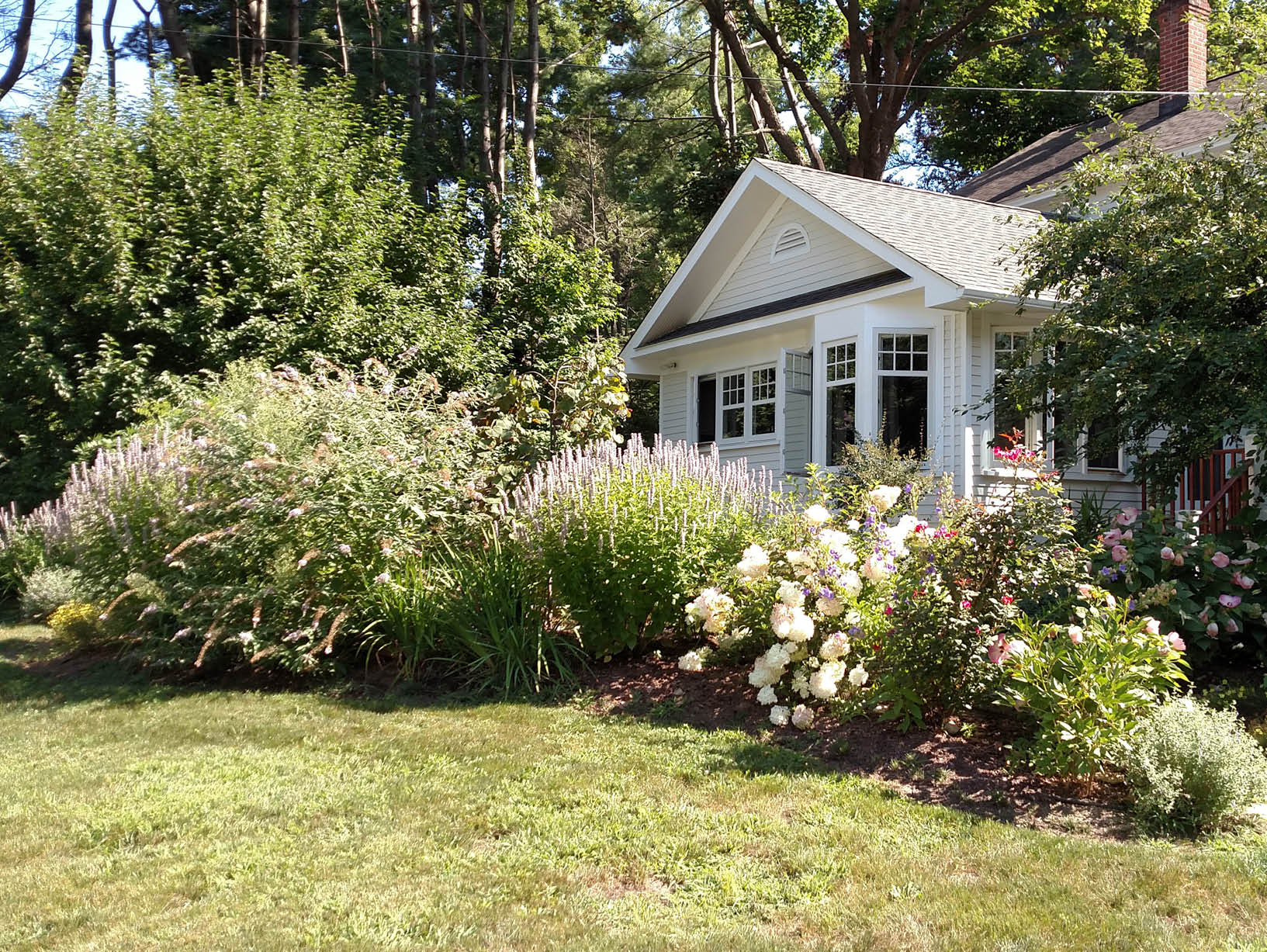Transform Your Landscapes for Less
As spring arrives, you may feel the urge to explore new possibilities for your yard. Plant new blooms in your garden, refresh your lawn, or make your curb appeal presentable for warm-weather entertaining—or even a home sale. New landscaping is an excellent investment not only for your property value but also for your sense of pride in your home. However, an ambitious project like a whole-property redesign can rack up costs quickly.
Thankfully, there are some simple ways to balance impressive new landscaping with a realistic budget. Follow these five tips to maximize your buying power so you can transform your yard for less.
1. Minimize teardowns
Rather than tearing down your landscaping and starting from scratch, find ways to work with what you already have. According to This Old House, removing a single mature tree can cost as much as $3,000, money that may be better spent on new flowers, new grass, or maintenance work like laying fresh mulch.
If you’re concerned with overgrowth—maybe some tree limbs are extending over your roof—you can save money by investing in trimming and pruning these mature plants. That way you can still enjoy the pleasant shade, attract beautiful wildlife to your garden, and reap other perks of fostering mature plants. And if you’re concerned with design limitations, find ways to design around large plant life rather than extract them. For example, it’s a waste to deplete a good chunk of your budget on tree removal just to plop a garden in its place; instead, consider planting your flowers in the sunniest area of your yard.

2. Focus on the facade
To get the most impact from your landscape renewal, plant eye-catching blooms and ornamental shrubs where the eye naturally goes: toward your front door and walkway. In the backyard, place impressive greenery around entertaining spaces like your porch or outdoor kitchen. By devoting more of your budget to these high-traffic areas, you can get more bang for your buck, as the results of your redesign will earn more attention.
If you have some extra money to spare, you can also trickle in new landscaping around your fencing and foundation. Save designing little-seen areas for last, such as the sides of your garage or the lengthy space between two houses.
3. Plant native greenery
The best and most cost-effective landscaping relies on native flora—trees, flowers, shrubs, and grasses that have evolved to handle the rigors of your local environment. Before you throw money into tropical trees (if you live in a cold climate) or drought-intolerant vegetables (if you occupy a hot climate), consider your plant hardiness zone. This will help ensure that your landscaping looks as good next year as it does now—and that you won’t have to spend money on brand-new plants all over again.
The Farmer’s Almanac has a handy guide on their website to help you choose climate-conscious landscaping. You can also ask an employee at your local garden center to show you their selection of native plants. Plant wisely, and you’ll have low-maintenance, hardy landscaping that endures as the seasons change.

4. Invest in next year’s garden
Landscaping is an investment that should last, so think about how your plant choices will grow and change in the future. While you may be tempted to stuff your flower beds with large, impressive blooms, crowding your plants is a surefire way to guarantee they won’t come back next year. A better approach is to plant foliage with proper spacing, so everyone has space to grow without competing for soil, sunlight, and water.
Consider fast-growing plants like poplar trees and privet shrubs, which will add attractive bulk to your yard as they mature. When flower shopping, choose long-lasting perennials over annual flowers with a short lifespan. “Plant perennials, and you won’t have to potentially dig up your flower beds or rotate what you’ve got out front to keep things looking nice,” Jeremy Yamaguchi, CEO of Lawn Love, says in Better Homes and Gardens. Sticking to perennials may limit your design choices, but you’ll be thankful when blooms return next year.

5. Leave a little breathing room
Resist the urge to overdesign every inch of your property. Not only will this blow your landscaping budget, but it can also make your yard appear cluttered and busy. Imagine an overcrowded living room with little space for walking and trinkets crowding every surface. The same principles apply outdoors: you really can have too much of a good thing.
Open space with the occasional tree or shrub may sound dull, but it actually offers pleasant contrast to more intricately decorated landscaping such as flower beds around your front porch. Sometimes, simplicity is more elegant than complexity. Investing in a small quantity of long-lasting, attention-grabbing plants can do wonders for your home—and your budget.


















